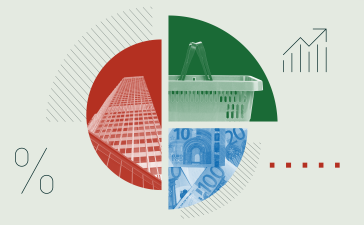Unlock the Editor’s Digest for free
Roula Khalaf, Editor of the FT, selects her favourite stories in this weekly newsletter.
The US labour market showed signs of cooling, with the unemployment rate rising in June and the pace of jobs growth in recent months shown to have been lower than previously reported.
The US economy added 206,000 jobs last month, the Bureau of Labor Statistics said on Friday. That exceeded the 190,000 roles economists polled by Reuters had forecast, but revisions to April and May data meant employment during those two months was 111,000 lower than initially reported.
Friday’s non-farm payrolls report also showed that the US unemployment rate increased to 4.1 per cent from 4 per cent, its highest level since November 2021. Economists had expected no change.
The US labour market’s resilience over the past two years has afforded the Federal Reserve the time to take a cautious approach to lowering borrowing costs as it sought to tame inflation. With price pressures easing, the central bank is closely monitoring employment conditions to help guide its decision on when to commence an interest rate cutting cycle.
The recently released minutes of the central bank’s June meeting showed policymakers welcomed ebbing price pressures, but are becoming more attentive to the downside risks to the US labour market, and the possibility of it turning to weak from strong quite quickly.
Several members of the Fed’s rate-setting committee emphasised during their meeting that “with the labour market normalising, a further weakening of demand may now generate a larger unemployment response than in the recent past when lower demand for labour was felt relatively more through fewer job openings”, according to the minutes.
“Numbers like this will raise eyebrows at the Fed and spur a discussion about whether rates are too restrictive and are threatening the expansion,” said Robert Tipp, PGIM Fixed Income’s head of global bonds and chief investment strategist, of Friday’s non-farm payrolls report.
Tipp said that “what looked like a boring report” showed that several factors were contributing to a softening trend in the domestic jobs market that could facilitate rate cuts by the Fed later this year.
“Downward revisions to previous months, the high proportions of healthcare and government jobs, cuts to temporary workers, and a weak household survey — this all points to a picture of moderation in the labour market,” he said.
The BLS revised May’s non-farm payrolls figure down to 218,000 from 272,000 previously, while April’s figure was revised lower to 108,000 from 165,000. That meant employment in those two months was 111,000 lower than previously reported.
Average hourly earnings were up 3.9 per cent from a year ago in June, the BLS’s report showed, the slowest pace of growth in three years.
Data from earlier this week painted a somewhat mixed picture of the labour market. In signs of cooling conditions, private employers were shown to have added fewer jobs than forecast in June and new weekly applications for unemployment aid ticked higher. But demand for US workers edged up slightly in May, as per a better than expected job openings report.
Treasury yields dropped on Friday to their lowest levels in several months following the release of June’s softer payrolls data, which traders bet could allow the Fed to cut interest rates twice this year.
The yield on the two-year Treasury, which is sensitive to monetary policy expectations, fell to a three-month low of 4.61 per cent, a drop of about 0.07 percentage points from Wednesday’s level before the public holiday. Traders are pricing in roughly two interest rate cuts this year, with the first coming by November.
The S&P 500 was up 0.5 per cent during mid-afternoon trading in New York.
Eric Winograd, senior economist for fixed income at AllianceBernstein, said he did not think the latest jobs report changed the fundamental picture of the domestic economy.
“The report is weaker than expected because of the revisions downwards to the past two months. Now May and June are basically in line. But this is not a labour market that is falling off a cliff.”









